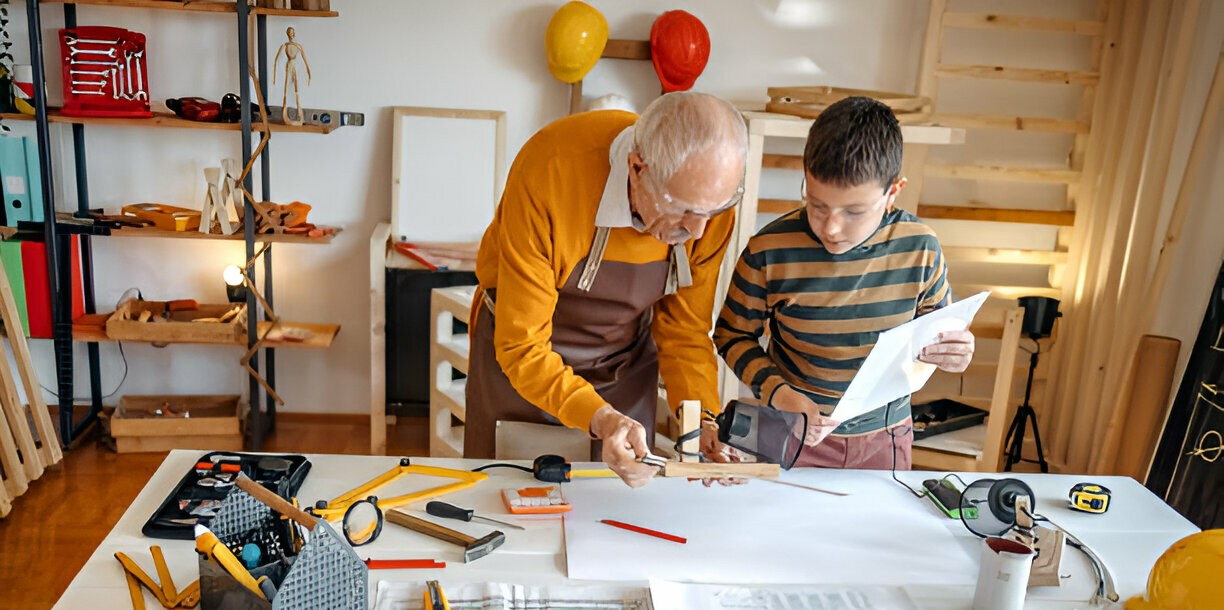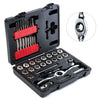
How Real Tools Can Support Early STEM Education
In the evolving landscape of education, STEM (Science, Technology, Engineering, and Mathematics) has emerged as a critical area of focus, aiming to equip students with the skills necessary for success in a technology-driven future. Amidst this educational shift, the integration of Real Kids Tool Sets into early learning environments presents a unique opportunity. Through hands-on experiences, real tools can significantly enhance STEM education by providing practical applications of theoretical concepts, fostering problem-solving skills, and encouraging creativity and innovation. This article explores the multifaceted role of real tools in supporting early STEM education, elaborating on their benefits, implementation strategies, and the broader implications for students and the education system at large.
Exploring the Essence of STEM in Education
STEM education, an acronym for Science, Technology, Engineering, and Mathematics, represents a multifaceted approach to learning that integrates these four disciplines into a cohesive learning paradigm based on real-world applications. Unlike traditional education methods, which treat these subjects as separate and often siloed entities, STEM education seeks to foster a holistic understanding by demonstrating how each discipline interconnects and applies to everyday life.
This educational approach aims not only to equip students with the technical skills required for success in the 21st-century workforce but also to cultivate critical thinking, creativity, and problem-solving abilities. By emphasizing hands-on learning, collaborative projects, and experiential activities, STEM education prepares students to innovate, tackle complex challenges, and contribute meaningfully to the rapidly evolving global landscape.
The Role of Hands-On Learning in STEM
Hands-on learning is a cornerstone of effective STEM education, bridging the gap between theoretical knowledge and real-world application.
Enhancing Conceptual Understanding
- Engaging with real tools allows students to directly apply scientific and mathematical principles, thereby enhancing their understanding and retention of complex concepts.
Fostering Critical Thinking and Problem-Solving
- Working with real tools on tangible projects encourages children to think critically, troubleshoot issues, and develop innovative solutions, key competencies in all STEM fields.
Encouraging Exploration and Experimentation
- Real tools invite exploration and experimentation, crucial components of the scientific method. This approach nurtures curiosity and a love for learning.
Related Article: How Real Kids Tool Sets Foster Problem-Solving Abilities
Real Tools in Early Education Settings
The introduction of real tools into early education settings must be thoughtful and strategic to maximize learning outcomes while ensuring safety.
Curriculum Integration
- Teachers can integrate real tools into existing STEM curricula by designing projects that require the use of specific tools, aligning with learning objectives in science, technology, engineering, or mathematics.
Safety First
- Before introducing tools, educators should conduct safety workshops, highlighting proper usage, storage, and personal protective equipment, ensuring a safe learning environment.
Appropriate Tool Selection
- Selecting tools that are age-appropriate, ergonomically designed for smaller hands, and specifically manufactured for educational purposes is essential to facilitate effective learning experiences.
Related Article: The Importance of Early Exposure of Kids to Carpentry Tools
Collaborative Learning with Real Tools
Collaborative projects using real tools can significantly enhance the learning experience, promoting teamwork and communication skills alongside technical abilities.
Team Projects
- Structuring assignments as team projects encourages students to collaborate, share knowledge, and delegate tasks based on individual strengths, mimicking real-world STEM professions.
Peer-to-Peer Learning
- Collaboration naturally facilitates peer-to-peer learning, as students articulate their thought processes and learn from each other's approaches and solutions.
Developing Soft Skills
- Through teamwork, students develop essential soft skills, including communication, leadership, and conflict resolution—key attributes for future success in any field.
Global Perspectives on Manufacturing and Retail
Understanding the global context of manufacturing and retailing real tools offers insights into quality, accessibility, and ethical considerations.
Quality and Safety Standards
- High-quality, safe tools designed for educational use often adhere to stringent manufacturing standards, reflecting a commitment to student safety and product durability.
Ethical Manufacturing Practices
- Selecting tool sets produced under ethical conditions supports responsible consumerism and educates students on the importance of sustainability and fair labor practices.
Accessibility and Affordability
- Efforts to make educational tool sets accessible and affordable worldwide can democratize STEM education, offering all children the opportunity to engage in hands-on learning.
Overcoming Challenges in Implementing Real Tools
While the benefits are clear, implementing real tools in STEM education comes with its set of challenges that educators and institutions must address.
Addressing Parental Concerns
- Transparent communication with parents regarding the educational value, safety measures, and supervision protocols can alleviate concerns about the use of real tools in classrooms.
Training for Educators
- Providing teachers with adequate training on tool usage, project design, and safety protocols ensures they are well-equipped to integrate real tools into their teaching practices.
Infrastructure and Resources
- Schools may face challenges related to infrastructure and resource availability. Creative solutions, such as shared tool libraries and community partnerships, can help overcome these barriers.
Case Studies: Success Stories in STEM Education
Examining successful implementations of real tools in educational settings can provide valuable insights and serve as a model for others to follow.
School-Based Makerspaces
- Makerspaces in schools, equipped with real tools and materials, have proven successful in engaging students in hands-on STEM projects, sparking interest and enthusiasm for learning.
Community Workshops and Programs
- Community-based workshops and after-school programs offer additional opportunities for children to engage with real tools under expert guidance, complementing formal education.
Industry-Education Partnerships
- Partnerships between educational institutions and industry leaders can provide access to advanced tools and technologies, exposing students to real-world applications of their STEM skills.
Looking Ahead: The Future of STEM Education
The future of STEM education is intrinsically linked to innovative teaching methods, including the use of real tools, to prepare students for the challenges and opportunities of the 21st century.
Technological Advancements
- As technology advances, so too will the tools available for educational purposes, offering new opportunities for interactive and immersive learning experiences.
Evolving Educational Paradigms
- Educational paradigms will continue to evolve, increasingly valuing experiential learning, creativity, and interdisciplinary approaches to problem-solving.
Preparing for Future Careers
- Incorporating real tools into STEM education not only enhances learning but also prepares students for future careers, many of which will require practical skills alongside theoretical knowledge.
Empowering the Innovators of Tomorrow
In summary, the integration of Real Kids Tool Sets into early STEM education offers a myriad of benefits, from enhancing conceptual understanding and fostering critical thinking to developing practical skills and encouraging creativity. However, the successful implementation of real tools requires thoughtful consideration of safety, curriculum integration, and collaborative learning opportunities. By addressing these factors and leveraging the potential of real tools, educators can significantly enrich STEM education, laying a solid foundation for the innovators and problem-solvers of tomorrow. This approach not only prepares students for future careers but also instills a lifelong love for learning, exploration, and discovery. Here's to cultivating a generation equipped to tackle the challenges of the future with confidence, creativity, and skill.



